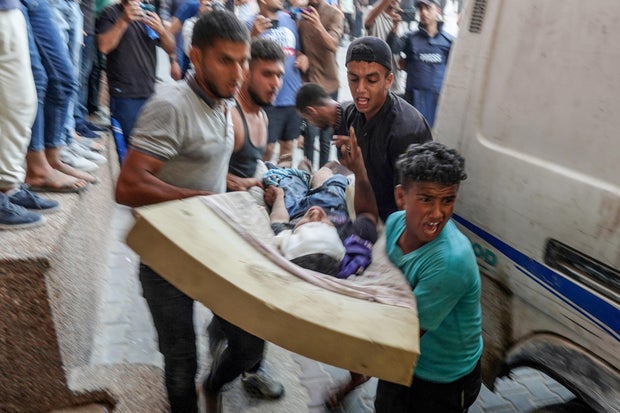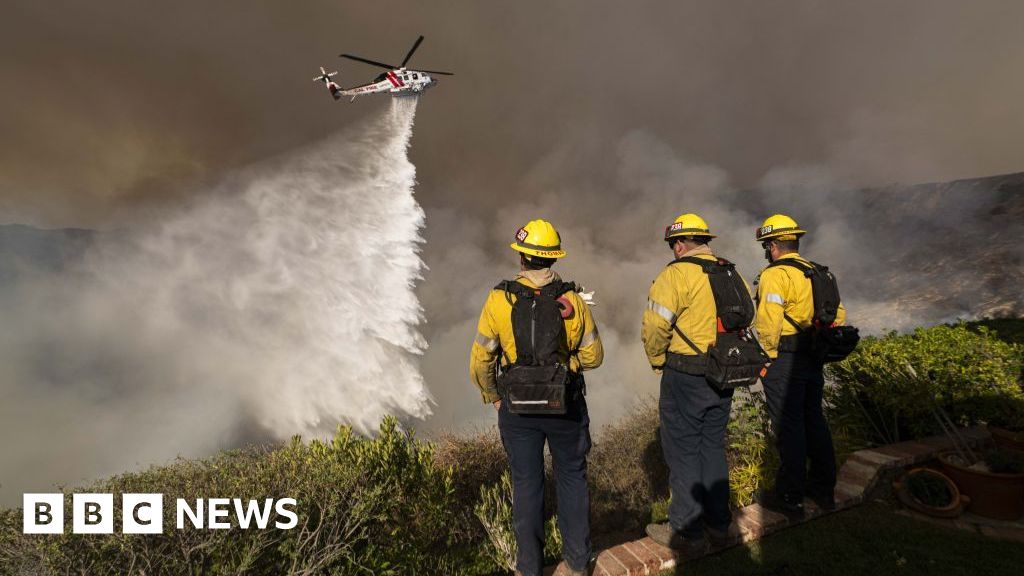Tel Aviv — A surge of hope for a breakthrough in Israel-Hamas cease-fire talks drew CIA Director William Burns back to the Middle East this week, but the hopes have been tempered by a blistering Israeli airstrike on a school sheltering displaced Palestinians in southern Gaza. The attack killed at least 29 people at the Al Awda school in Khan Younis, according to an official at the nearby al-Nasser Hospital.
In a statement, the Israel Defense Forces said it used a “precise munition” in the strike on the school to kill a militant who took part in Hamas’ Oct. 7 terrorist attacks, which killed almost 1,200 people.
The IDF said it was reviewing the incident, but it has always blamed Hamas for all of the deaths in the war, accusing the group of using Palestinian civilians as human shields and basing weapons and fighters in schools, hospitals and homes.
BASHAR TALEB/AFP/Getty
The IDF has also launched a new assault further north, in Gaza City, calling for yet another evacuation of Palestinian civilians. Images posted online Wednesday showed people holding fliers dropped by the military in the area, urging people to leave.
Hundreds of thousands of people trapped in Gaza, a narrow strip of land sandwiched between Israel and the Mediterranean Sea, have fled from the fighting four or five times already.
The United Nations called the forced exodus “dangerously chaotic” — with doctors and nurses at two hospitals rushing to move their patients.
The IDF said medical facilities did not need to evacuate, but its previous raids at other hospitals in Gaza have left medical staff fearful.
Hamas said the new assault could “reset the negotiation process to square one,” despite Israeli Prime Minister Benjamin Netanyahu agreeing to send a delegation to restart the talks.
Netanyahu agreed to send the Israeli delegation back to the talks after Hamas replied to the latest draft cease-fire proposal with some requested changes, but both sides have remained at odds on key points of a staged truce process. One of the biggest obstacles has been Netanyahu’s insistence that any cease-fire agreement leaves his military the option to resume operations against Hamas.
Alon Pinkas, a former advisor to four Israeli foreign ministers and an outspoken critic of Netanyahu, told CBS News on Wednesday that he believes — as do many Israelis — that the country’s leader doesn’t really want a cease-fire.
Asked if Netanyahu, by agreeing to continue with the truce talks, was just throwing a bone to his backers in Washington to keep the pressure off, Pinkas said the Israeli leader’s actions were even more disingenuous than that.
“He’s just taking them for a ride,” he said. “He’s [Netanyahu] been doing so for the better part of the last nine months, and he’s been doing so with impunity and immunity.”
The Israeli leader has accused Hamas of blocking progress in the talks, suggesting the group isn’t serious about the negotiations as it has also continued its military operations against Israel during multiple rounds of discussions.
The White House has consistently backed Israel’s right to defend itself against Hamas and, with few exceptions, has and never halted the supply of U.S. weapons to the country. But Mr. Biden and his subordinates have also heaped pressure on Netanyahu to allow more humanitarian aid into Gaza and limit the number of civilian casualties in a war that medical officials in the Hamas-run enclave say has killed more than 38,200 Palestinians.
President Biden announced a project in March to boost the flow of aid into the territory — a floating pier built by the U.S. military on Gaza’s coast at a cost of more than $230 million.
The pier project, always touted by U.S. officials as an additive measure and not a solution to the dire humanitarian crisis in Gaza, has been plagued by logistical challenges, mostly weather related, and it has never managed to facilitate a significant flow of aid materials.
After being knocked out of service again by rough seas, operations on the pier were to be reestablished this week — but then the structure could be permanently dismantled. The removal could come as soon as next week, but no final decision has been made according to U.S. military officials.























Discussion about this post